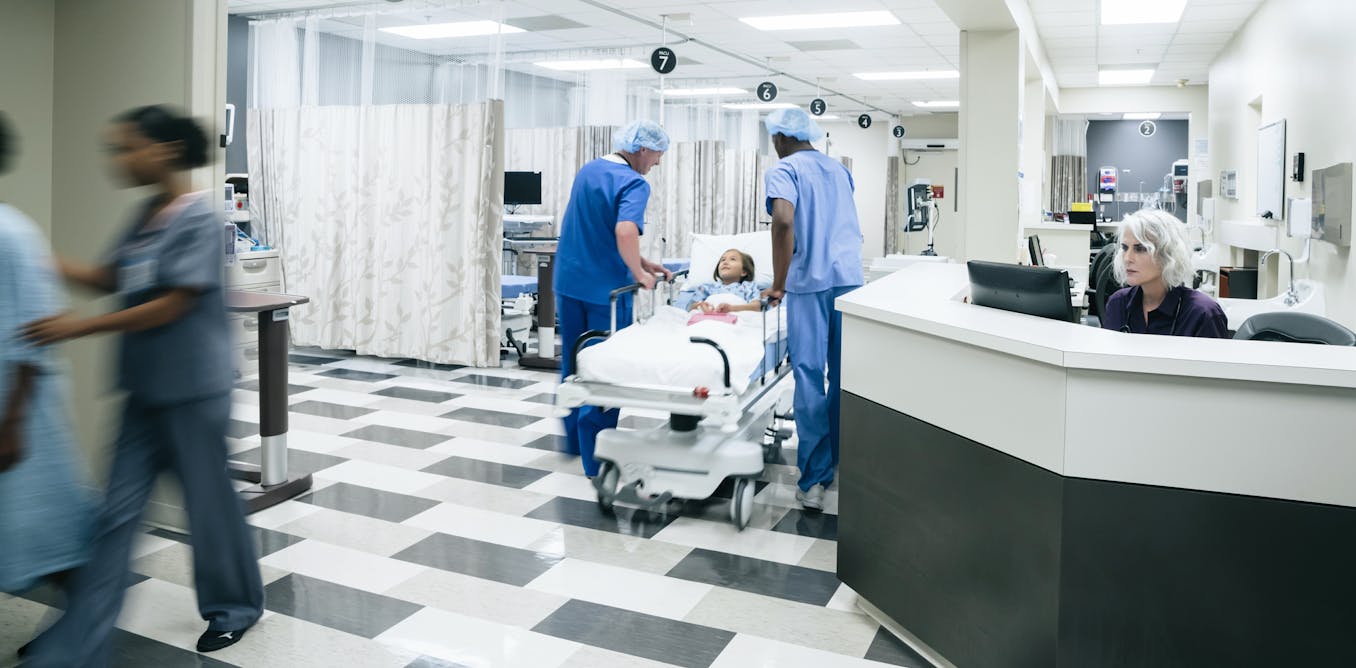A MUM-OF-THREE has died just months after doctors revealed her dodgy tummy was actually cancer.
Olivia Renga was diagnosed with terminal liver cancer in mid-January and tragically died in June, at the age of 33.

2

2
She leaves behind young daughters Neve, Wilkie and Elliot and her high school sweetheart Josh.
The mum was riddled with neuroendocrine small cell carcinoma, which was deemed rare and aggressive because it’s typically found in the lungs, not the liver.
Olivia and Josh from Ballarat, Australia were “hoping for a miracle” when the mum started chemotherapy, but the worst happened and Josh was left a single father.
“We are devastated and are just navigating things best we can,” he told MailOnline.
“It burns me inside thinking about what our future might look like,” he added.
TUMMY PAINS
Olivia had initially started to experience nausea and abdominal discomfort in late November last year which at first was “nothing of concern”.
But on Christmas Eve she collapsed in sudden and extreme pain which left her bedridden for the rest of the day.
Since no doctors surgeries were open over the festive period, she pushed through the pain before finally seeing a GP to get tested.
Her results came back fine, and her symptoms weren’t considered serious because she didn’t have any family history of liver cancer.
She decided to get a second opinion from another GP who sent her to the hospital for further testing.
Josh, who runs his own business, recalled Olivia visiting him at work to share the dreaded news.
“It all happened so quickly over the space of a month. We both cried and were distraught,” he said.
Doctors discovered one main tumour and multiple smaller ones in Olivia’s liver.
The 6 stomach pains you should NEVER ignore
WE’VE all had a tummy ache here and there, whether it’s from chomping our food too fast or because we’ve been sitting at our desk all day.
Tummy pain is usually nothing to worry about and for most people, it goes away on its own.
But stomach pain can, occasionally, be a symptom of something serious, such as bowel cancer.
If it comes with other symptoms or keeps coming back, you may want to keep track of the issue and see a doctor.
Here experts reveal the different types of stomach aches and the ones you shouldn’t ignore.
1. Pain accompanied by blood in your poo – bowel cancer
Dr Sarah Jarvis, director at Patient Access said without doubt, one of the most serious causes of blood in your poo is bowel cancer.
It’s one of the red-flag signs that you could have the disease – so if you spot any, book a GP appointment straight away.
2. Sharp pain – appendicitis or stomach ulcer
Dr Jarvis said that sudden, sharp pain could be a symptom of a number of unpleasant conditions.
“A sudden, very severe pain is much more likely to signify something serious going on, so it’s worth getting it checked out quickly.
3. Pain accompanied by feeling sick – tummy bug
“Feeling sick with stomach pain can be an indication of a tummy bug or food poisoning (pain is often all over the tummy and colicky, and often accompanied by diarrhoea),” Dr Jarvis said.
4. Pain accompanied by unexplained weight loss – cancer
Unexpected weight loss may sound like the answer to many of our dreams but if you aren’t actively trying to lose weight, it’s often an extremely concerning sign that something’s wrong.
If it’s accompanied by belly pain, it could be a sign of:
- Cancer
- Pancreatitis
- An IBD like Crohn’s or Colitis
5. Pain accompanied by a fever – inflammation
“Fever often suggests infection or inflammation,” says Dr Jarvis.
Possible causes would include:
- Appendicitis (pain often starts around the tummy button then moves to the bottom right of the tummy)
- Food poisoning or tummy bug
- Infection in the gall bladder (pain on the top/top right of the tummy)
- Diverticulitis (inflammation in pockets in the colon)
- Pelvic infection in women or an abscess in the stomach cavity
6. Long term belly pain – indigestion
Dr Jarvis says: “How long you should wait to see your GP depends very much on how severe the pain is and whether you have any of the ‘red flag’ symptoms”.
The most common causes of stomach pain are period pains in women and indigestion.
Indigestion commonly causes burning pain in the top of the tummy, often with bloating, burping and feeling sick. Your pharmacist should be your first port of call here.
Most of the time, stomach pain is going to totally normal – just trapped wind or indigestion.
And if it goes on for a while, it might be worth looking at what you’re eating, your posture and activity levels, how fast you’re eating and how much you’re chewing.
But if you have any of these other factors, then it’s crucial that you are seen to by your GP.
Her specific cancer was difficult to stop and chemotherapy only worked to stop the cancer from getting worse for a short period of time.
The family spent as much time together as they could at home, but Olivia went to the hospital as needed.
Josh now fears for her daughter’s future.
“They need their mum, they need her at their weddings, every Mother’s Day… we just don’t know what’s going to happen and the unknown is hard to deal with.”
What are neuroendocrine tumours?
The neuroendocrine system is a network of glands and nerve cells that make hormones and release them into the bloodstream.
These hormones help control normal body functions, for example, digesting food.
Neuroendocrine cells are found throughout the body, but mainly in the gastrointestinal tract (including large bowel and small bowel), pancreas and lungs.
Neuroendocrine tumours (also referred to as NET) are an uncommon type of tumour that forms in these cells.
The type is generally defined by where the abnormal cells come from and can range from low grade (slow growing) to high grade (fast-growing).
Neuroendocrine tumours that produce extra amounts of hormones can cause certain symptoms and are referred to as functional tumours.
However, not all neuroendocrine tumours produce extra hormones (non-functional).
What are the symptoms?
The signs of a neuroendocrine tumour depend on where in the body it is and what hormones it produces.
For example, a tumour in the digestive system may cause diarrhoea, constipation or tummy pains.
A tumour in the lungs, on the other hand, may cause wheezing or a persistent cough.
Some tumours may lead to abnormally large amounts of hormones being released into the bloodstream.
These can cause symptoms such as diarrhoea, flushing, cramps, wheezing, low blood sugar, changes in blood pressure and heart problems.
Make an appointment with your doctor if you have any persistent signs and symptoms that worry you.
Source: Cancer Council + NHS




